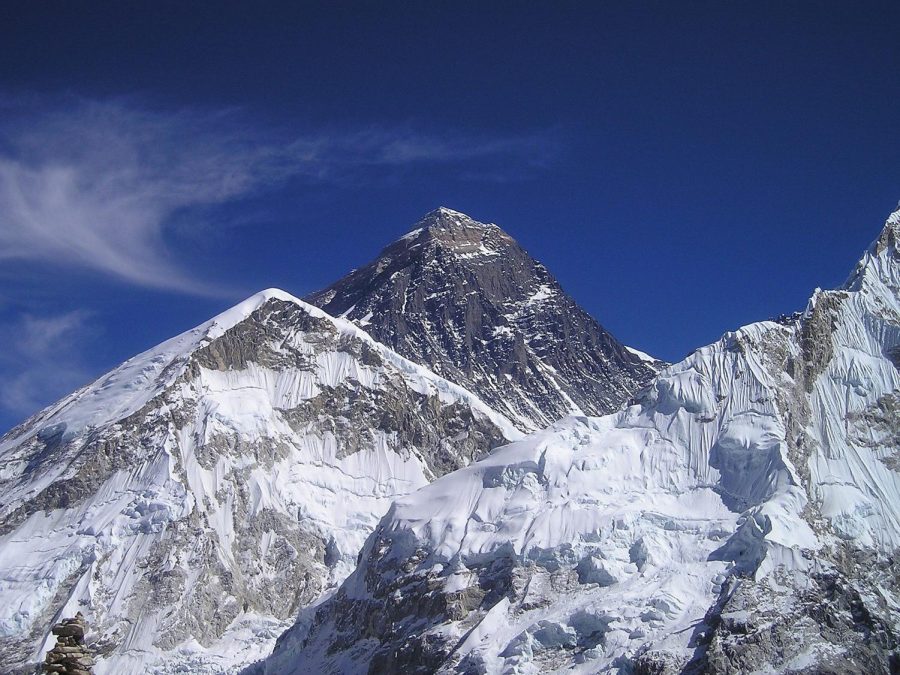Sherpas: Mastering Mount Everest
March 3, 2023
Climbing Mount Everest, while still dangerous, has become an almost commercial activity. Though the trek is expensive and physically demanding, the mortality rate has declined with technological advances and greater knowledge of the mountain. The climb is treated like an adventure sport—albeit a particularly dangerous one. Even now, and across the storied history of climbs to the summit of Mount Everest, native Nepalese Sherpas have been at the core of success on the mountains, never given the credit they deserve for the exploitation and heightened danger that they have and continue to face regularly.
The Sherpas are a Nepalese group that are lauded for their skill, strength, and endurance on climbs up Everest and other peaks in the Himalayas. They are often hired, like on that famous trek in 1953, to carry bags, to guide climbers, to secure safety lines, and to complete other demanding physical tasks that make the climbing of Mount Everest possible. According to NPR, they are usually only paid about one-tenth of what Westerners are paid when they serve as guides—usually about $5,000, as compared to the whopping $50,000 that Western guides are given. These Sherpas also work in incredibly dangerous conditions, facing the risk of climbs such as extreme cold, avalanches, accidents, and more, usually several times in a year. They are often given insufficient supplies to sustain themselves on the expeditions, including less oxygen and less dexamethasone prophylactically—a drug that is somewhat effective in preventing hypoxia-related health concerns in high altitudes. Sherpas are given every disadvantage compared to Western climbers and, in the modern climbing industry, to clients. Even with this massive exploitation, Sherpas manage to overcome these obstacles and have a lower mortality rate than other climbers, but are rarely recognized for their achievements.
One of the most obvious examples of the lack of recognition that Sherpas face is in the case of Tenzing Norgay. The first western climber to reach the summit of Mount Everest was New Zealander Sir Edmund Hillary, cited by National Geographic to be the leader of a 1953 British expedition. Alongside him for the entire journey and the arrival at the summit was Sherpa guide Norgay. Only recently was Norgay’s name included in article headlines alongside Sir Edmund Hillary’s, despite the fact that without Norgay’s help—and that of the other 20-some Sherpa climbers on the expedition—Hillary would likely not have reached the summit. According to The Guardian, the disparities between the recognition that the two climbers received have still gone unrecognized. For example, Hillary was knighted by Queen Elizabeth II, styling him Sir Edmund Hillary; Norgay, conversely, was only given the George Medal, an honor given to civilians for bravery and conceived of in 1940. Additionally, Hillary’s initial narrative was that he and Norgay reached the summit together, but his story changed to depict him reaching the summit first and on his own, perhaps due to pressure from systemic Western prejudice against the Sherpas.
Norgay is just one example of many Sherpas that have not been given the credit they deserve for their countless contributions to Western success on Mount Everest and across the Himalayas. More than a century since the first publicized (and failed) attempt to climb Mount Everest, very few Sherpas have been given proper recognition, and when they have, it is often lacking in comparison to their contributions, like in the case of Norgay. Western success on Mount Everest is wholly dependent on the exploitation of the Sherpas. Proper and regal recognition for Sherpas’ efforts and the risks they take for the benefit of expeditioners and—in modern cases—clients, is long overdue.



